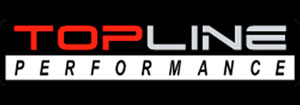This would have a bigger, beneficial impact on society.. An increase in investment should also free up more money for research and development.
Environment, Health and Safety (EHS) Requirements.Some processes within labs are hazardous or toxic to health, and these are usually communicated to the laboratory design team by the client early in the design phases.

It’s important to ask for all processes being undertaken as to the EHS requirements, as often it affects the laboratory design layout or services design.. For example, consider processes which require either containment or clean room status.In both instances, this means that process, along with perhaps all the other processes within its functional group, will need to be separated physically from the other functional groups and an air pressure differential adhered to.This directly drives the lab layout, plus the services requirements and the finishes specifications..

Hazard studies, conducted with both the users and the laboratory designers present, should identify the major EHS issues with the aim to design out all the risks.Some processes may use hazardous material or be explosive, so a Dangerous Substances and Explosive Atmospheres Regulations (DSEAR) assessment must be undertaken by the client with the lab designer involved, as it will affect the plant selection and design.. We must be aware of design elements which are assumed to be inherently safe.

A fume cupboard, for example, is only safe if it passes its face velocity tests, and that depends on the air velocity within the room.
We ensure that these additional tests are specified to ensure compliance and avoid high velocity air supply grilles near fume cupboards, and we always design labs containing fume cupboards to BS 14175..She points out that, in actuality, nuclear has consistently been identified as necessary in our climate mitigation roadmaps, by everyone from the Intergovernmental Panel on Climate Change, to the International Energy Agency and the European Commission.. A leading environmentalist, Gogan says that she too started out as anti-nuclear, but her perception of nuclear technology changed after reading Professor David MacKay’s book, Sustainable Energy Without the Hot Air.
The book illuminates just how difficult it would be to meet our decarbonisation goals with renewables alone, and dispels wrong assumptions held about nuclear energy based on old, outdated ideas.. Now Gogan serves on the UK government's Nuclear Innovation and Research Advisory Board, the board of US NGO, Nuclear Innovation Alliance, as well as the French NGO, Voices for Nuclear.She’s passionate about the substantial opportunities new nuclear presents to help us meet our net zero goals, and is particularly hopeful about small modular reactors and advanced heat sources, which are designed to be manufactured products, largely made in factories.
In addition, she highlights the fact that a power plant using advanced heat solutions, costing one to two billion pounds to build, and which is quickly assembled on-site, is much easier to finance, and much better for local communities, than a very large scale, 20 billion pound construction project that creates years of disruption, dust and noise.. Gogan believes that any remaining sceptics will become convinced about the benefits of nuclear as they become more aware of the versatility on offer by these new nuclear, advanced heat solutions, which are capable of delivering so much more than consistent, reliable electricity.In actuality, electricity accounts for just 20% of our energy usage, and we can use these new nuclear technologies to produce not only electricity, but also emissions-free heat, which offers a variety of benefits and uses, from hydrogen production and the desalination of water, to the supply of heat to homes and businesses..
